Abad was best known for adapting the trapunto quilting technique in which layers of textiles are stuffed and sewn together to produce a three-dimensional effect.
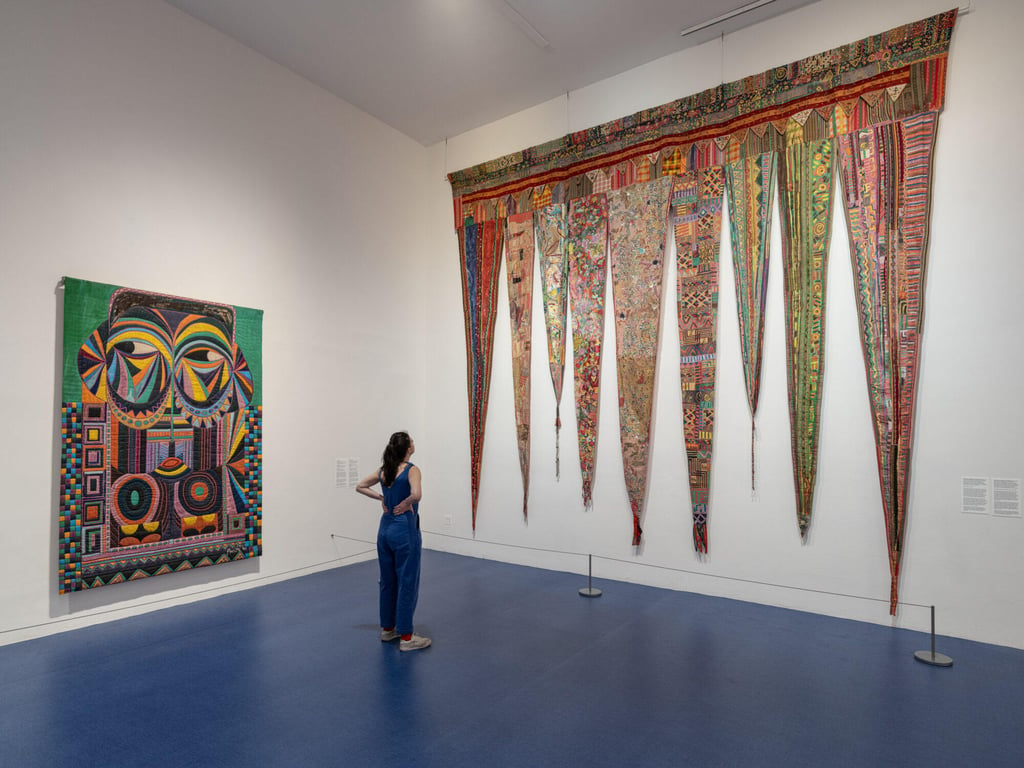
Abad would paint on the quilts and attach a variety of objects such as buttons, mirrors and seashells she had collected, often from the very subjects portrayed in her works, to create pieces that spoke of political conditions, the immigrant’s experience and the role of women in society.
Although she was well known among artists during her lifetime, Abad was not in the artistic mainstream, partly because curators often dismissed her art as too folksy.
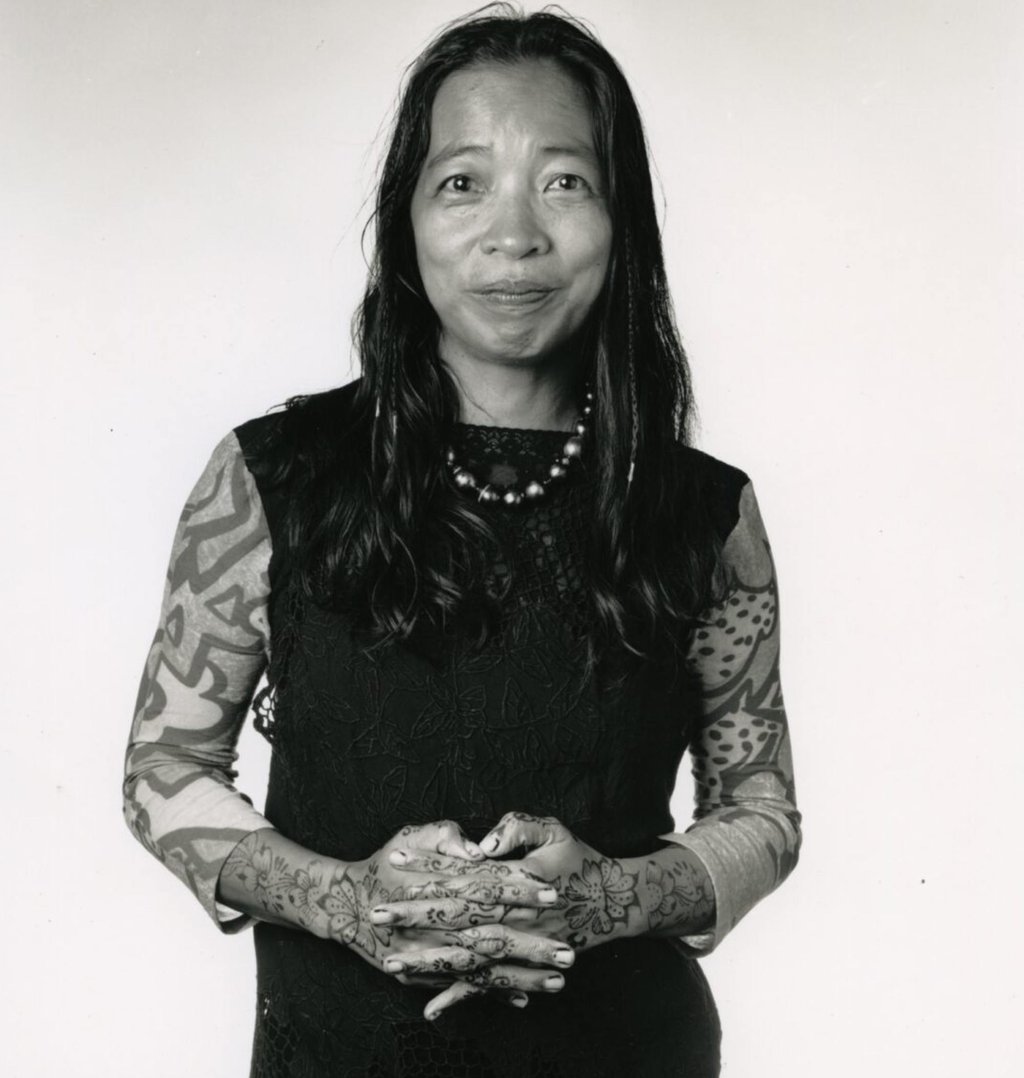
That changed around 2018 when her ex-husband, Jack Garrity, and other family members began to take her art out into the world.
A retrospective was mounted at the Walker Art Centre in Minneapolis in 2023, and Abad is currently the subject of a popular retrospective at the Museum of Modern Art PS1 in New York, which will travel to the Art Gallery of Ontario in Toronto in October.
“It’s remarkable to see the impact the show has had on people,” Ruba Katrib, curator and director of curatorial affairs at PS1, tells the Post. “It’s had a powerful effect on both visitors and people from the art world.”
Abad’s art practice was very much bound up with her everyday life. According to her nephew Pio Abad, the curator of Abad’s estate and also an artist, she maintained a studio in her house and integrated her work into her daily existence.
“Art, craft, ceramics, painting, they were all just part of one visual language that was her life,” Pio said in a PS1 panel discussion about the artist.
Abad’s life had moments of high drama. She was born in Batanes province in the Philippines in 1946 to a politically active family, and both her parents served in the Congress of the Philippines.
Pacita was interested in reaching a wide audience – she wasn’t just thinking about the art world
When the dictator Ferdinand Marcos came to power, Abad’s family opposed his rule, and her family home was machine-gunned as a result.
Fearing for her life, she left for the United States in 1970 and ended up staying with an aunt in the San Francisco Bay Area towards the end of the hippie movement.
She originally planned to continue her legal studies in the US and become a human rights lawyer, but in a move that surprised her family she announced she would become an artist instead.
Although her interests and her subject matter ranged widely, her roots in the Philippines always exerted a strong influence on her work.
The most impressive piece at PS1 is a trapunto 16 feet (4.9 metres) tall which expresses the vileness of Marcos and his regime.
Using a representational style influenced by Sri Lankan exorcism masks, the fearsome Ferdinand Marcos and his Cronies (1985) depicts the dictator as a devil who is literally devouring his people.

“The work was made over a 10-year period, and it is truly monumental,” Katrib says. “It’s influenced by Sri Lankan masks, and she made some stuffed snakes, which she stuck onto it. She also put some small dolls in Marcos’ mouth. It’s very detailed and intricate, and it’s shocking to see in person.
“She is making a clear political statement, and it is not only about Marcos himself – she depicts his cronies to show the system of corruption, the system of greed, that affects everyday people. Abad depicts a corrupt regime and corrupt economy that devours people.”
Abad’s use of fabric was also rooted in the Philippines’ folk culture, Katrib says. “Her use of textiles relates to women’s work around the world, but her initial contact with it came from the Philippines, and she found similarities elsewhere.
“She definitely embraced elements of Philippines’ folk culture. That was a radical approach in the 1990s, as folk culture was not as accepted in the art world back then as it is now.”
Abad’s extensive travels provided many of her subjects. In San Francisco, she met and married Garrity, a graduate student, who became a developmental economist for the World Bank.
The couple spent time in around 60 countries because of Garrity’s work, often living in underdeveloped countries such as Sudan and Bangladesh.
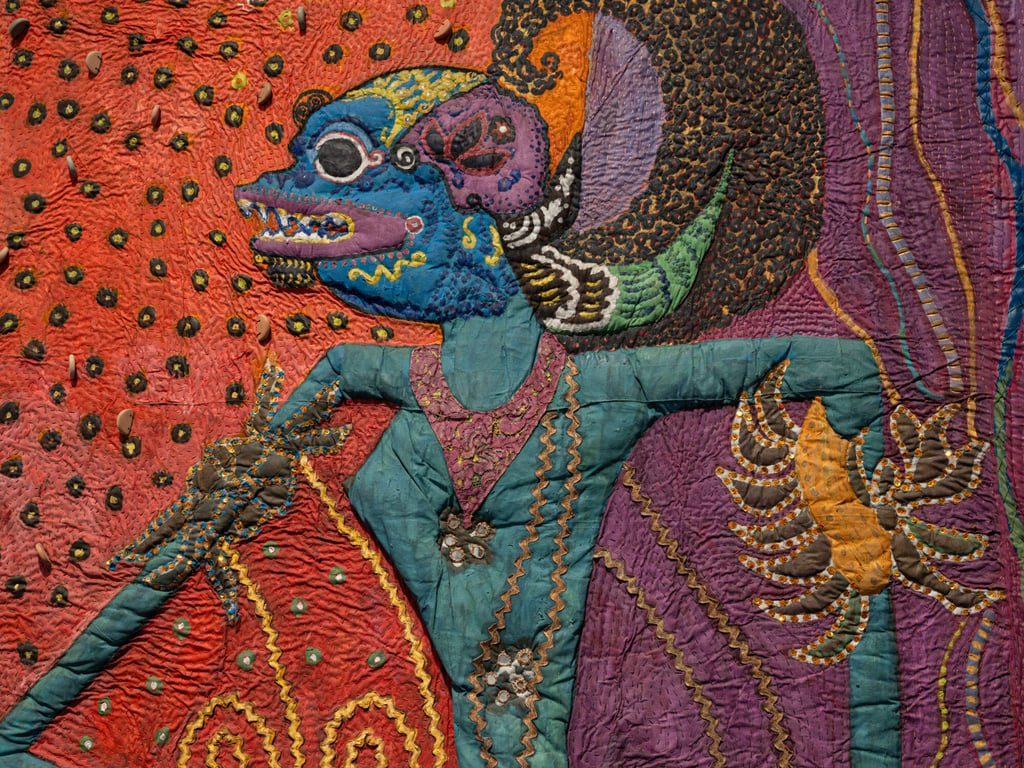
While Garrity was doing his job, Adab would go off and do hers, befriending local female textile workers, learning about their techniques and making them the subjects of her works.
The painting, the textiles, the women she met and her interest in under-represented communities all merged in her unique approach to art.
“When you talk about Pacita, you can’t help but list the countries that she’s lived in, the material she uses, the different indigenous cultures that are represented in her work,” Pio said.
“But I think that kind of polyphony of textures, of materials, is indicative of how she’s been omnivorous in the way that she makes works celebrating many different cultures in a way that makes it her own language.”
Abad would thoroughly research the lives of her subjects, including those of immigrants in her adopted city of San Francisco. She felt artists should remind society of its social responsibilities, and she commented on the American immigrant experience in works like LA Liberty.
“LA Liberty is a work that reimagines the Statue of Liberty as a woman of colour,” said Pio. “The classical robe is reimagined as a very multicoloured robe.
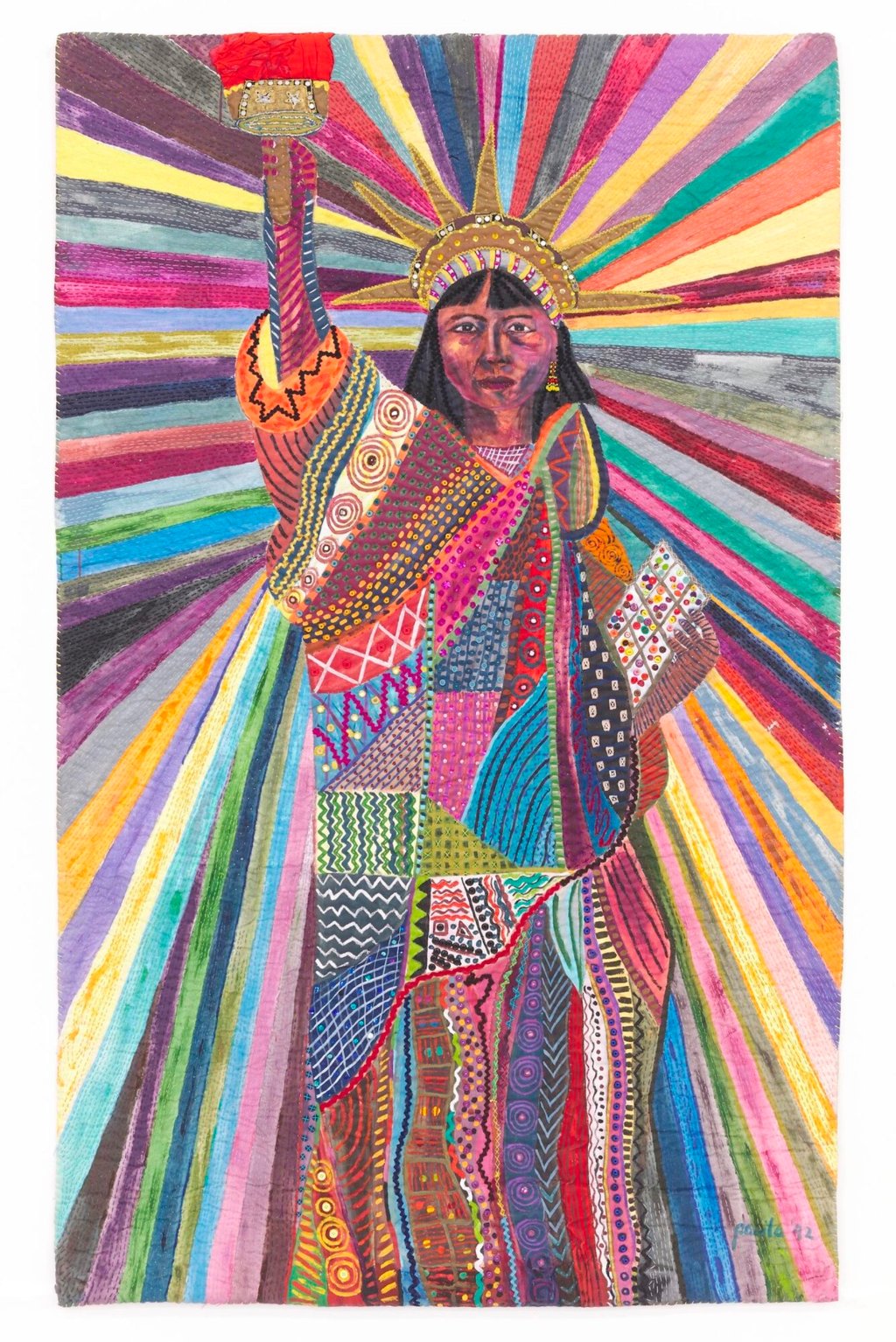
Abad researched such works like a journalist.
“She was a socially conscious artist, she was interested in journalism and she had studied law,” Katrib says. “She was trying to document what she was seeing in her travels around the world, and doing that via painting as opposed to photography.
“She felt that painting could slow down and memorialise events, and lead to understanding.”
Abad loved her work and kept creating right up until her death.
Towards the end of her life Abad lived in Singapore, where, after a morning spent undergoing radiation therapy for her cancer, she would harness herself to the Alkaff Bridge and paint it in bright colours as part of a public arts project.
During her lifetime, Abad often tried to get her works shown by mainstream institutions, but she was always rejected – her family have noted she kept a large stack of rejection letters.
The late but growing recognition of Abad’s legacy goes hand in hand with how fabric artists, especially female artists, are increasingly becoming accepted as serious, canonical artists today.
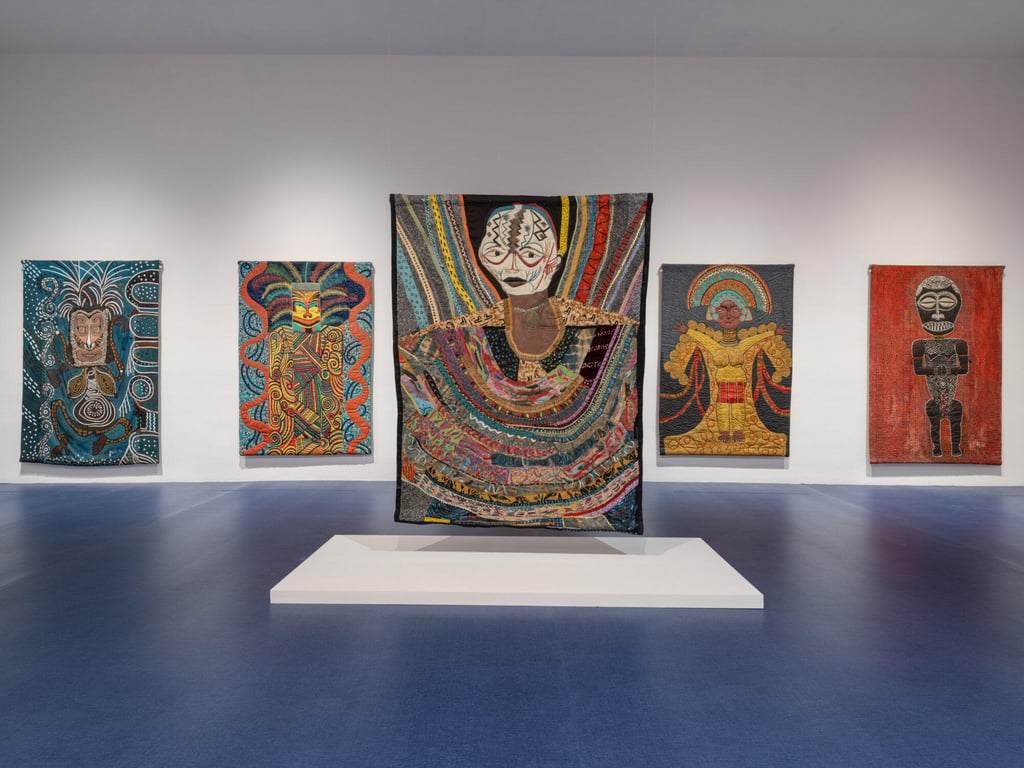
As the curator of this year’s biennale, Adriano Pedrosa, said: “The textile-based works, which are one of the motifs in the exhibition, revealed an interest in craft, tradition, and the handmade and techniques that were at times considered other or foreign, outsider or strange, in the vast larger field of visual arts.”
No longer. That is especially true for an artist whose very practice was built on the idea of accessibility.
“Pacita was interested in reaching a wide audience – she wasn’t just thinking about the art world,” Katrib says. “She wanted her themes and topics more to be seen by a broad audience, and she took on that idea in the way she approached her practice.”
“Pacita Abad”, MoMA PS1, 22-25 Jackson Avenue, Queens, New York. Until Sept. 2.

